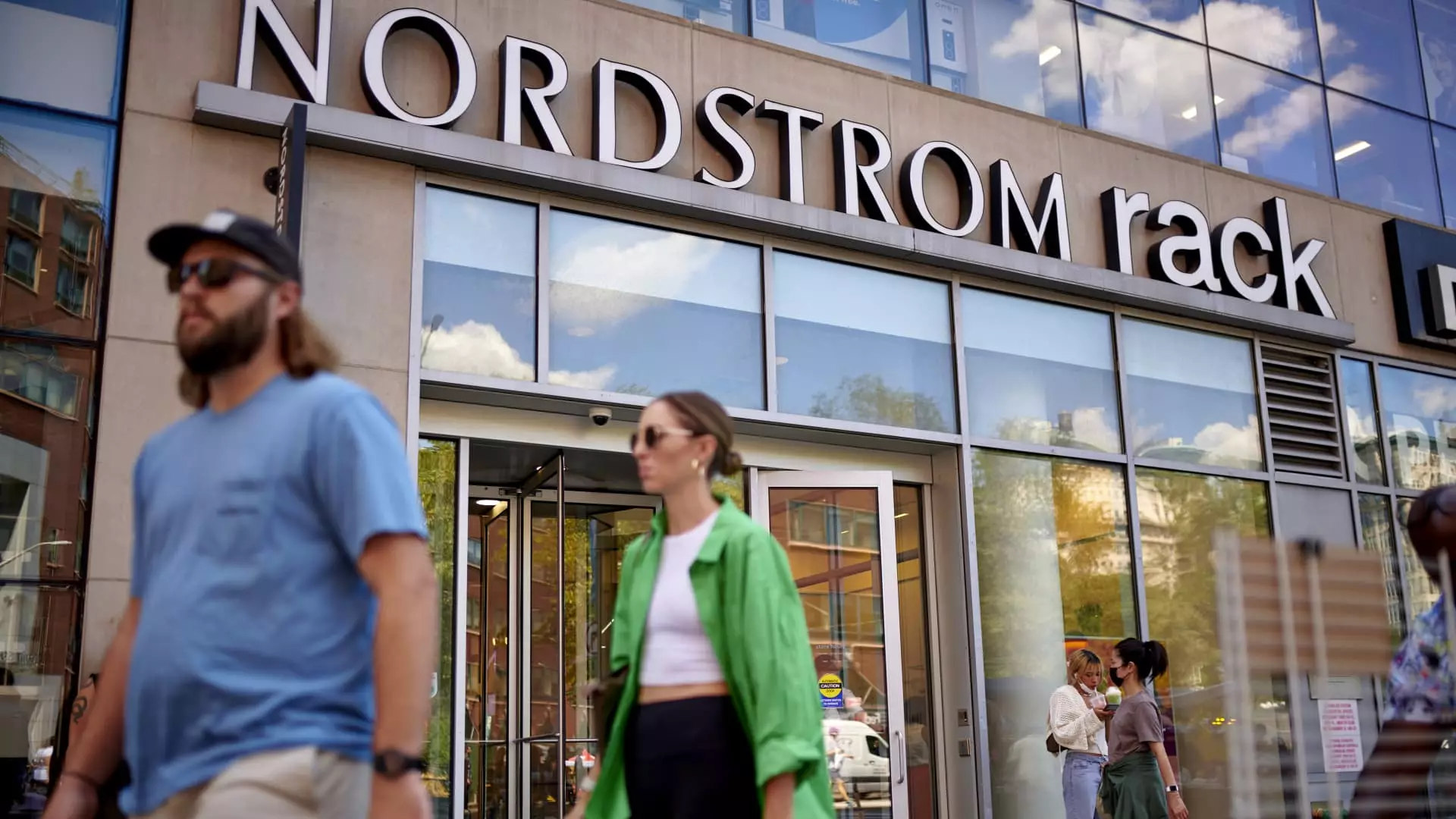On Tuesday, Nordstrom Inc. reported its latest earnings results, surpassing Wall Street’s projections and signaling that the retailer is making headway in its goal to manage costs and enhance overall efficiency. The Seattle-based department store chain delivered an adjusted earnings per share (EPS) of 96 cents, outperforming the anticipated 71 cents by a considerable margin of 25 cents. However, the optimism surrounding this strong EPS was tempered by a conservative forecast for the remainder of the year. This juxtaposition indicates a complex narrative for Nordstrom, as it navigates a market characterized by increased competition and economic pressures.
In its forward guidance, Nordstrom anticipates adjusted earnings per share to lie between $1.75 and $2.05, slightly higher than the previous outlook of $1.65 to $2.05. Furthermore, the company expects sales to range from a slight 1% decline to a 1% increase compared to the previous year, a more upbeat outlook than the prior forecast of a 2% drop to a 1% increase. CEO Erik Nordstrom expressed a measure of confidence, stating that the company was “encouraged by the continued topline strength in both banners” while promising to maintain the momentum built over recent months.
In analyzing the second quarter performance, Nordstrom recorded a net income of $122 million, or 72 cents per share, a decline from $137 million, or 84 cents per share, reported during the same period last year. Before considering exceptional items linked to supply chain disruptions, the adjusted earnings of 96 cents per share reflect a significant improvement in the six-month period ending July 29, with profits climbing to $83 million versus a net loss of $67 million for the previous year.
Revenue figures highlight Nordstrom’s journey through the changing retail landscape, with sales reaching $3.89 billion, marking a 3.4% increase from $3.77 billion last year. However, this was slightly below analysts’ expectations of $3.90 billion. The company’s comparable sales saw a mild increase of 1.9%, while gross merchandise value surged by 3.5%. Yet, it remains ambiguous if this increase is indicative of higher prices or a genuine uptick in consumer volume.
Adapting to Changing Consumer Behaviors
The ongoing impact of inflation and elevated interest rates has led consumers to become more selective regarding discretionary spending. Consequently, retailers like Nordstrom are compelled to refine their operations and implement cost-cutting measures to safeguard profit margins amidst fluctuating demand. Although profitability waned when compared to the same quarter of the previous year, the improving trajectory over the past six months suggests that Nordstrom is steadily advancing.
Key initiatives aimed at enhancing the supply chain have yielded positive results, with Nordstrom noting a 5% improvement in delivery times for online orders. The transformation in logistics has been designed to streamline how merchandise is processed and delivered to customers, which, according to reports, has contributed to higher conversion rates and reduced return rates—critical metrics in today’s retail environment.
An essential facet of Nordstrom’s strategy has been the growth of its off-price banner, Nordstrom Rack. The past few quarters have seen robust momentum within Rack, significantly bolstering the overall performance of the company. In the latest quarter, Nordstrom Rack reported impressive sales growth of 8.8%, complemented by a 4.1% rise in comparable sales compared to the same period last year. In contrast, the primary Nordstrom banner achieved more modest growth, with net sales and comparable sales increasing by just 0.9%.
To further capitalize on the rise of off-price shopping—a trend bolstered by economic uncertainty—Nordstrom has expanded its Rack locations, opening 11 new stores in the current fiscal year and aiming for at least 22 by year’s end. This tactical expansion and recruitment of seasoned off-price professionals illustrate Nordstrom’s commitment to capturing a more price-conscious consumer base, particularly as competition in this sector intensifies, notably from industry giants like TJX Companies.
Nordstrom’s latest earnings report presents a mixed picture: strong short-term results alongside cautious long-term expectations. As the retailer adapts to the shifting economic climate and consumer habits, its focus on operational efficiency, supply chain improvements, and the growth of Nordstrom Rack will be pivotal. While the company remains optimistic about its capabilities to maintain momentum, the road ahead necessitates vigilance and strategic foresight in an increasingly competitive market.

